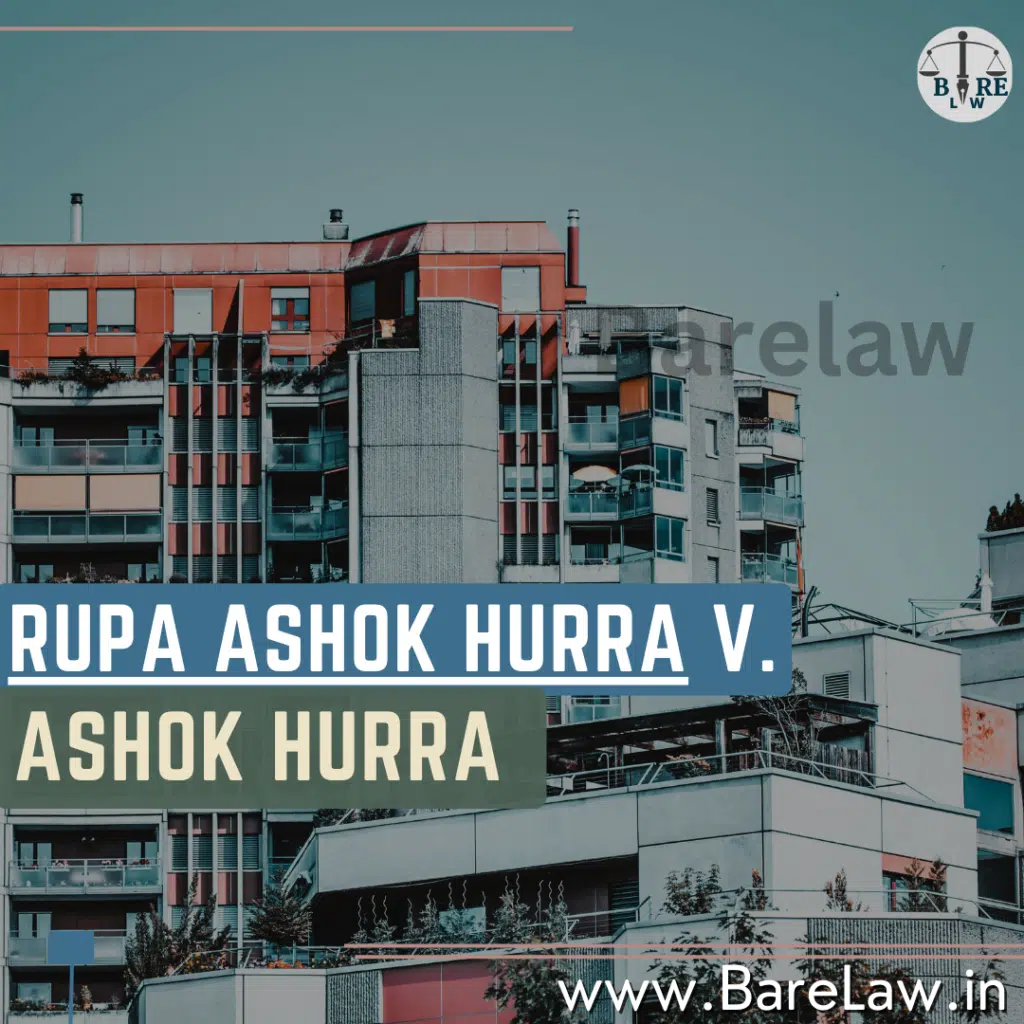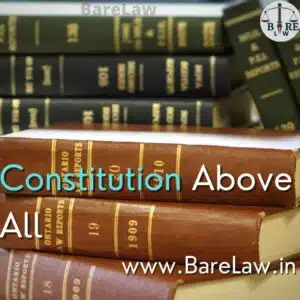Simplifying Your Life & Law | Legal Drafting services

Case Brief on Rupa Ashok Hurra v. Ashok Hurra Writ petition (civil) 509 of 1997
Primary details of the case:
Introduction:
Is there any court of law or procedure to overturn or to find the remedy even after the petitioner who wants the relief had been dismissed of his review petition under Article 137 of the Indian Constitution? If the answer is yes, then what are the grounds for such a relief? This article details such an interesting case, where the Supreme Court was questioned to reverse its own decision even after the review petition is filed. It is considered a significant case with respect to the curative petition.
Facts of the case:
It is important to note that the fact of the case was referred to and identified through the special leave petition that was filed by one of the parties in the Supreme Court of India. This current case was an appeal or, in other words, questioning the validity of Supreme Court justice after the review petition was rejected by the highest court. We should first look into the facts collected in the 1997 judgment.
Original facts of the case, as mentioned in the 1997 special leave petition, were that the petitioner and the respondent got married as per the Hindu rites and customs at Ahmadabad. Due to some issues, there was a difference of opinion between the husband and wife, which persisted till 1983, in which the wife left the matrimonial home. In 1984, both the parties had filed a joint petition for divorce under section 13B of the Hindu Marriage act. They prayed for a simple decree of dissolution of marriage by way of mutual consent. In 1985, the husband alone filed an application, where he prayed for the passing of a decree for divorce. Thereafter the wife was asked to be present for the order, but the same got adjourned, and during each adjournment, the parties were having talks on compromise and settlement. Everything went unsuccessful, and in 1986, the wife filed an application to withdrawn her consent for the divorce and prayed for dismissal of divorce by mutual consent. This was objected to by the husband and stated that the wife has no right to invoke the consent already granted. The wife also objected to the divorce, which was prayed by the husband.
Because of the objection made by the wife, the husband has approached Supreme Court praying for divorce and appeal to be allowed. In the judgment delivered on March 10, 1997, the two-judge bench of the Supreme Court allowed the SLP subject to the fulfillment of the conditions that a decree of divorce for dissolution shall be passed under section 13B of Hindu Marriage Act, 1955, and this decree shall take place only after the payment or deposit of maintenance which is 10 lakh rupees in the court for the respondent (the wife).
The most interesting part of this case is that the wife filed a review petition under the Constitutional provision of Article 137 against the order passed in the Special Leave Petition. Unfortunately, her review petition was also dismissed. But, the three-judge bench which dismissed the review petition had referred the same to the constitutional bench by framing the following constitutional issues.
Issues before the Constitutional Bench:
The only issue that the Constitutional Bench had to deal with was whether an Aggrieved party (the wife) is entitled to go for any relief against the final order or the judgment delivered by the Supreme Court even after the Review petition under Article 137 was dismissed through the means of Article 32 of the Indian Constitution or not?
Arguments:
Learned senior Counsel, Mr. Shanti Bhusan, appearing for the petitioner (the wife), argued and also submitted that the principle of the finality of the supreme court should be left off, which means that the council insisted the apex court’s finality of decision under 32 should go away in the cases where the orders were passed without jurisdiction or in violation of the principles of natural justice and fundamental rights. It also applies to the cases where there has been gross injustice has occurred.
On the other hand, Learned Attorney-General appearing as the amicus curie, in this case, had adopted an unusual approach to defining that there should be an opportunity that should be provided to the aggrieved person even after the procedure under article 135 has been exhausted. They should be allowed to see the relief in the cases when there is a gross misuse of the process of the court or the miscarriage of justice, ensuring that the party has no other forum to go for their justice. It was one of the cases where the attorney-general for the court was of the opinion to give justice to the aggrieved party, in spite of appearing as the amicus curiae.
Significant Verdict:
The five Judge Bench after hearing the arguments from both the petitioner’s side and from all the amicus curiae held that irrespective of whether the petitioner is a party to the case or not, final order or the judgment made by the Supreme Court could not, in any way, be assailed through an application made under article 32 of the Indian Constitution.
It was of the opinion that the same article should never be invoked to challenge the legitimacy of the court judgment or the order passed by it even after the remedy under article 137 has been exhausted. But, the court also ensured that this point should not be applicable in the case where the fundamental rights under Part 3 of the Indian Constitution have been violated by the apex court because of the fact that no court of law in India should act in violation of fundamental rights. Also, it pointed out that the judiciary (specifically the superior courts) never fall within the definition of state or even the other authorities for the purpose of article 12 of the Indian constitution.
Even if the judiciary has done its part correctly, there might arise some situations, and in such cases, there shall be an error, and legally, without any doubt, the judiciary will rectify such mistakes. It was noted by the court that in the rarest of rare cases, the judiciary should keep aside its policy and should act in the interest of the public at large.
Lastly, the court held that in order to prevent the abuse of power and process of justice delivery system, Supreme Court might reconsider the judgment or decree passed by it in the way of Curative Petition. Hence the court laid down the precise guidelines for filing the curative petition and shall contain a certification by a senior advocate concerning the fulfillment of requirements before filing the curative petition.
You may also like to read:
-
06 Aug 2021
Case Briefs
Case Brief of Justice K.S.Puttaswamy (Retired). V. Union of India and Ors, 2017 (Right to Privacy – A Grandstand View)
-
05 Jul 2021
Opinion
Maratha Reservation: From Legislature of Precedent
-
18 Jun 2021
Know Your Law
Domestic violence in India
-
09 Sep 2021
Know Your Law
CONCEPT OF LEGAL AID IN INDIA
-
24 Aug 2021
Know Your Law
Other authorities under article "12" of Constitution of India
-
12 Sep 2021
Know Your Law
Constitution above all






